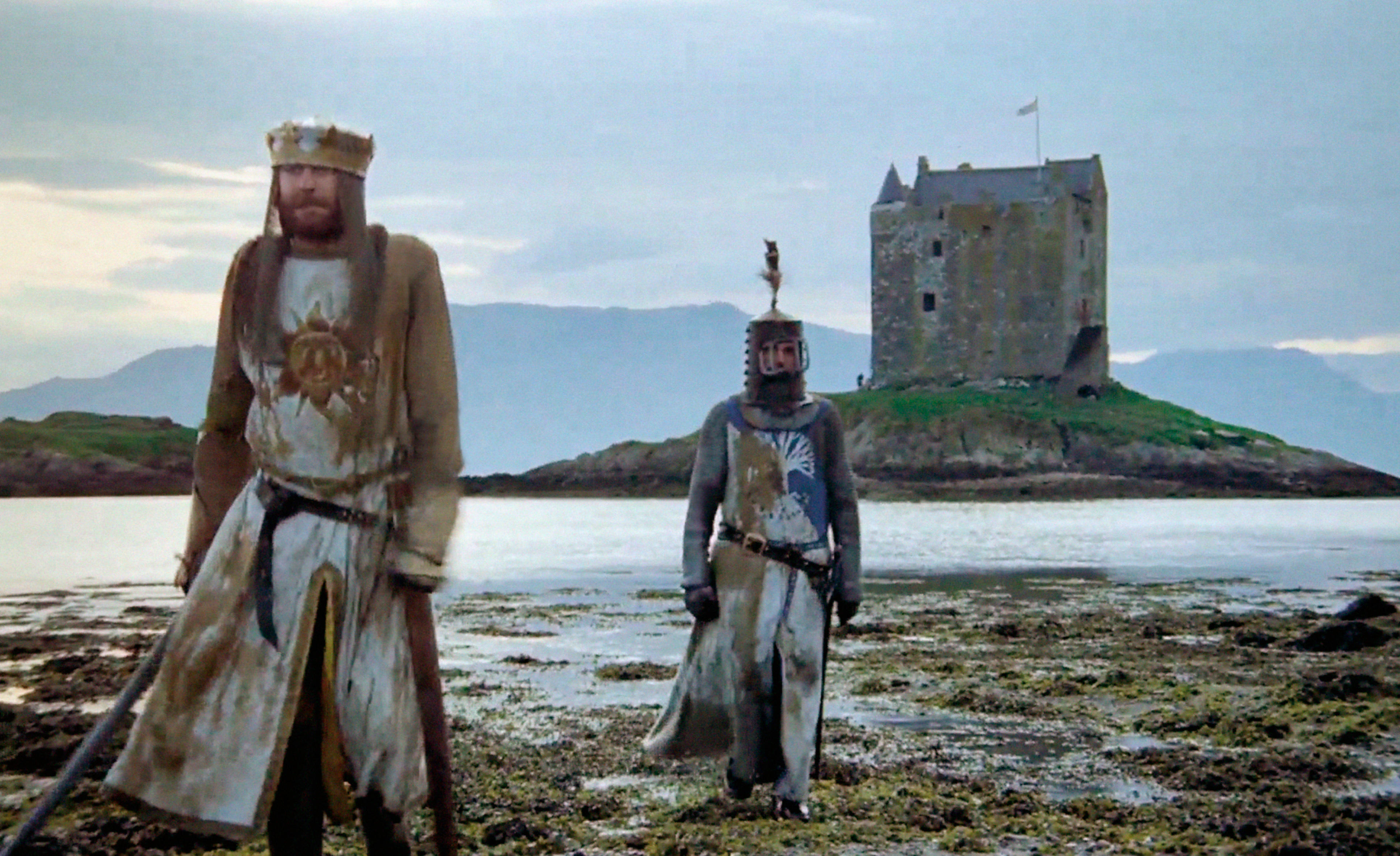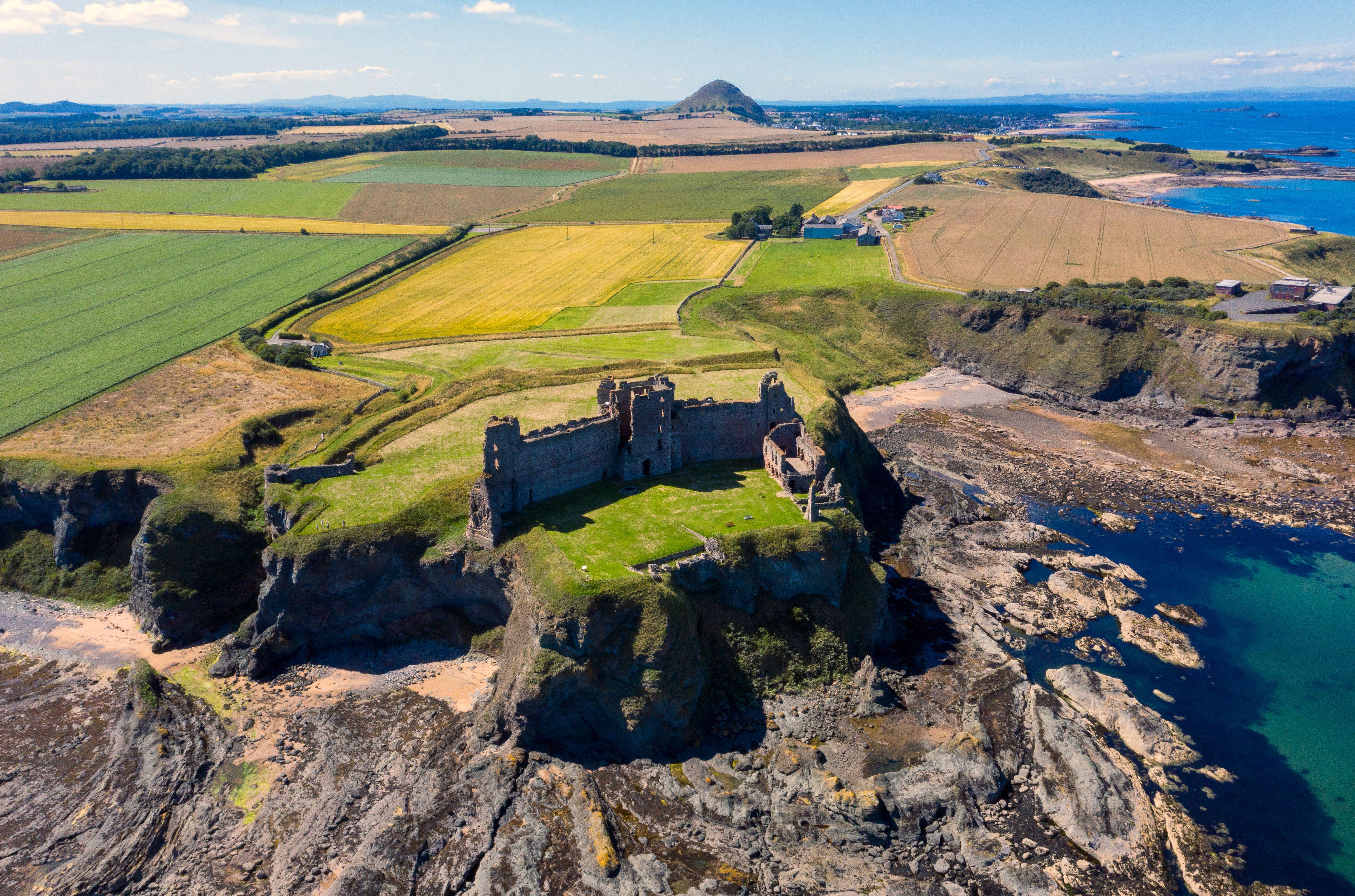Left in ruins: Should we let historic buildings 'gracefully die'?
At the edge of the pretty market town of Kelso lies its abbey, reaching towards the heavens like it has done since the early 12th century. Established under King David I, the abbey’s location close to the border saw it fall victim to repeated English attacks during the Wars of Independence and it was finally left in ruins following an assault in 1545. Nearly 500 years on and despite its turbulent past, the building still stands. But time has taken its toll. Like many others around Scotland, it is currently closed to the public, its medieval stonework deemed unsafe until inspection works can be carried out.
While most of Scotland’s historic buildings have reopened following the pandemic, there are a number maintained by Historic Environment Scotland (HES) which remain completely off limits. As well as the abbey in Kelso, the list includes Edzell Castle near Brechin, which once played host to Mary Queen of Scots, and the imposing stone fortress of Castle Campbell beside Dollar, which was occupied by Oliver Cromwell’s forces in the 1650s.
Others have had temporary remedial works undertaken to make them safe for visitors. At Doune Castle, used as a location in Outlander and where a Frenchman played by John Cleese told King Arthur and his knights, “your mother was a hamster and your father smelled of elderberries” in Monty Python and the Holy Grail, public access could only be maintained once a crash deck was installed to prevent accidents from falling masonry. At Tantallon Castle in East Lothian, which is perched on cliffs overlooking the Bass Rock, scaffolding was brought in by helicopter to allow for the creation of so-called safe corridors. While the grounds are open to the public, the castle itself remains closed.
No one would argue that these buildings are Scotland’s architectural crown jewels, nor are they as important to the tourism economy as Edinburgh Castle or Urquhart Castle on the banks of Loch Ness, but they remain an important part of the country’s history and architectural heritage. Their continued closure should concern us all.
“These sites are so important to the communities they sit within,” says Stuart Savage, the national delivery lead for HES’s high-level inspection programme. “Every one of these sites is in someone’s back garden or someone’s town centre. For the communities around about, it’s their site.”
HES says that of 70 sites that were fully closed in 2021, 26 remain completely off limits to the public. Those properties are now being worked through on a priority basis to allow inspections to take place and establish what further work needs to be carried out. But aside from just old age, there is a new problem for the conservationists to deal with – climate change.
“It’s a combination of factors,” says Savage. “A lot of the sites we look after are ruins, they are roofless structures. What we’re finding is that we’re having accelerated wet and drying patterns – climate change is accelerating the deterioration of the sites. We’ve got warmer weather, wetter weather and that allows the vegetation [in the ruins] to grow for a longer period of time. We also have saturated walls which are exposed to freeze/thaw conditions…”
When Scotland’s historic properties first closed their doors it was not as a result of weather or climate change, but a pandemic, one unlike anything these buildings had seen in their recent history at least. Of course, they were not the only attractions to close. It feels far removed amid the welcome normality of summer 2023, but when Covid first arrived in early 2020, everything shut down. But as life slowly began to return to normal, there was growing disquiet over why some historic buildings had not reopened.
Then at the start of last year in a newspaper interview, the director of conservation at HES, Dr David Mitchell, warned of “difficult choices” ahead and suggested some at-risk buildings could be allowed to “gracefully die”. Mitchell was unavailable for interview when Holyrood approached HES.
“If you have a conversation with someone at HES, you may start getting the expressions ‘managed decline’ and ‘curated decay’ thrown at you,” says Jocelyn Cunliffe, an architect and the acting chair of the Architectural Heritage Society of Scotland (AHSS), a charity.
“That shouldn’t be the case. HES are looking after these castles and there should be public access to them. [They’re important for] local economies, places like Linlithgow, where people expect to go and have a good wander around [the palace] and then have a cup of tea or lunch in one of the local cafes. If you know that the palace is closed, then you may decide not to go there. It’s the same across Scotland.”
According to figures from HES, in 2019 (the year before the pandemic hit) Scotland’s “historic environment” generated £4.4bn for the country’s economy and supported 68,000 full time-equivalent jobs. Edinburgh Castle, the second-most visited attraction in the country after the National Museum of Scotland, received 1.3m visitors alone last year. Stirling Castle received more than 400,000 visitors, while the Glenfinnan Monument, which is managed by the National Trust for Scotland and marks the spot where Bonnie Prince Charlie raised his standard during the 1745 Jacobite Rising, received 398,000 after the area featured in both Outlander and the Harry Potter films.
But despite the importance of historic sites to the tourism economy, HES has seen a fall in the amount of money it receives from the Scottish Government in recent years. In the government’s 2023-24 budget, it received grant in aid funding of £72.7m. While that figure was a slight increase on the previous year, it is down from £79.4m as recently as 2020-21.

Monty Python and the Holy Grail which filmed at Doune and Eilean Donan (pictured) | Credit: Alamy
The Scottish Government’s 10-year plan for historic buildings, Our Place in Time, was published in 2014 and had “care and protect” as one of its strategic priorities. Yet in a decade that’s featured an independence referendum, Brexit, and a pandemic, it’s safe to say that the maintenance of historic architecture has not been near the top of the political agenda.
When asked in parliament last October about HES reportedly letting buildings “gracefully die”, then culture minister Neil Gray said he would continue “discussing future potential approaches” with the organisation. It was not the answer heritage groups wanted to hear.
“The country is not being encouraged to repair buildings in the way that it should be,” says Cunliffe. “There was always this sense that [HES] isn’t getting enough money from the Scottish Government that can be used for the maintenance of buildings in care.
“They used Covid as an excuse to close everything down and then delay the re-opening. You can ask questions about why the liability for anything falling off a building lies with Historic Environment Scotland, which is a charity, rather than Scottish Ministers.
“These buildings are our past, but they’re also our future. They are exemplars of their kind and HES’s care of them should be exemplary. If HES is saying we can no longer care for these, then why should anyone else care for their monuments?”
In fairness to HES, there have been a considerable number of masonry falls recorded over the past year. A freedom of information request by AHSS, which was published earlier this year, shows that in 2022, the Border abbeys, of which Kelso is one, were particularly susceptible. But there were also incidents recorded at Edinburgh Castle, Dunblane Cathedral, Linlithgow Palace and Tantallon. In 2020-21 alone, conservation works on Stirling Castle cost nearly £700,000, while £755,000 was spent at Edinburgh Castle and a further £300,000 at Dumbarton Castle. There were smaller outlays at dozens of other properties around the country.
“We’re not closing sites without good reason,” says Savage. “There are sites causing concern and our legal duty is to keep people safe – that’s why fences are up until we can work our way through the repairs that are identified in the inspections.

Aerial view of Tantallon Castle in East Lothian | Credit: Alamy
“Our predisposition is to open sites wherever we can…one of our key functions is to allow access rather than prevent it.”
When asked about protecting Scotland’s historic buildings for posterity at the start of last year, Dr Mitchell said: “Everything decays and we are fighting against the ravages of time. In some instances, we will have to let some go.”
That position may be the most cost-effective option, it may possibly be the most pragmatic, but it is unlikely to be the most popular. While no one wants to see historic sites fenced off from the public, the policy is likely to be particularly unpopular in places that rely on their old buildings for visitors and tourism revenue.
As for Kelso abbey, inspections are expected to begin in the next few months. It remains to be seen what kind of work – and how long it will take – needs to be undertaken before it can be reopened to the public. For now, it stays closed, one of the most spectacular buildings of medieval Scotland partially hidden behind protective metal fences – its history celebrated, its future uncertain.
Holyrood Newsletters
Holyrood provides comprehensive coverage of Scottish politics, offering award-winning reporting and analysis: Subscribe